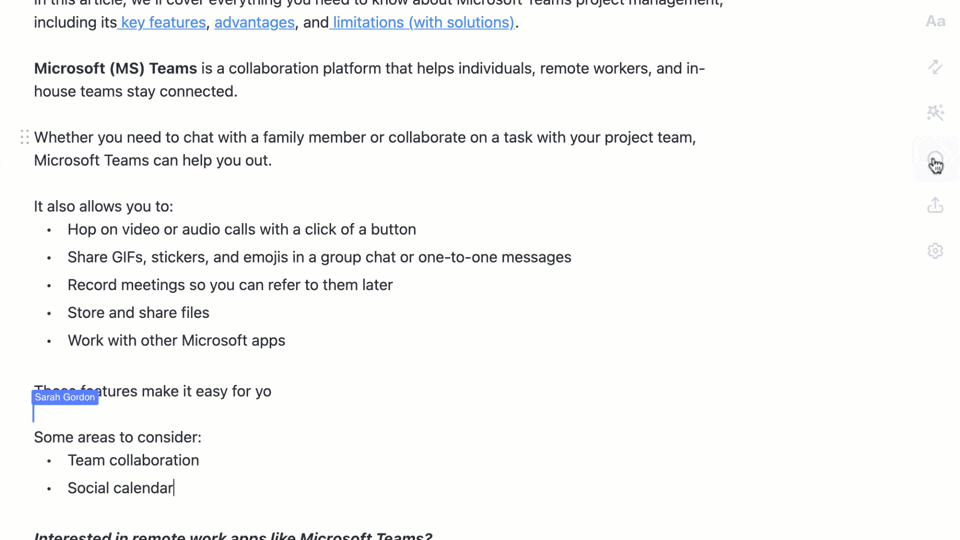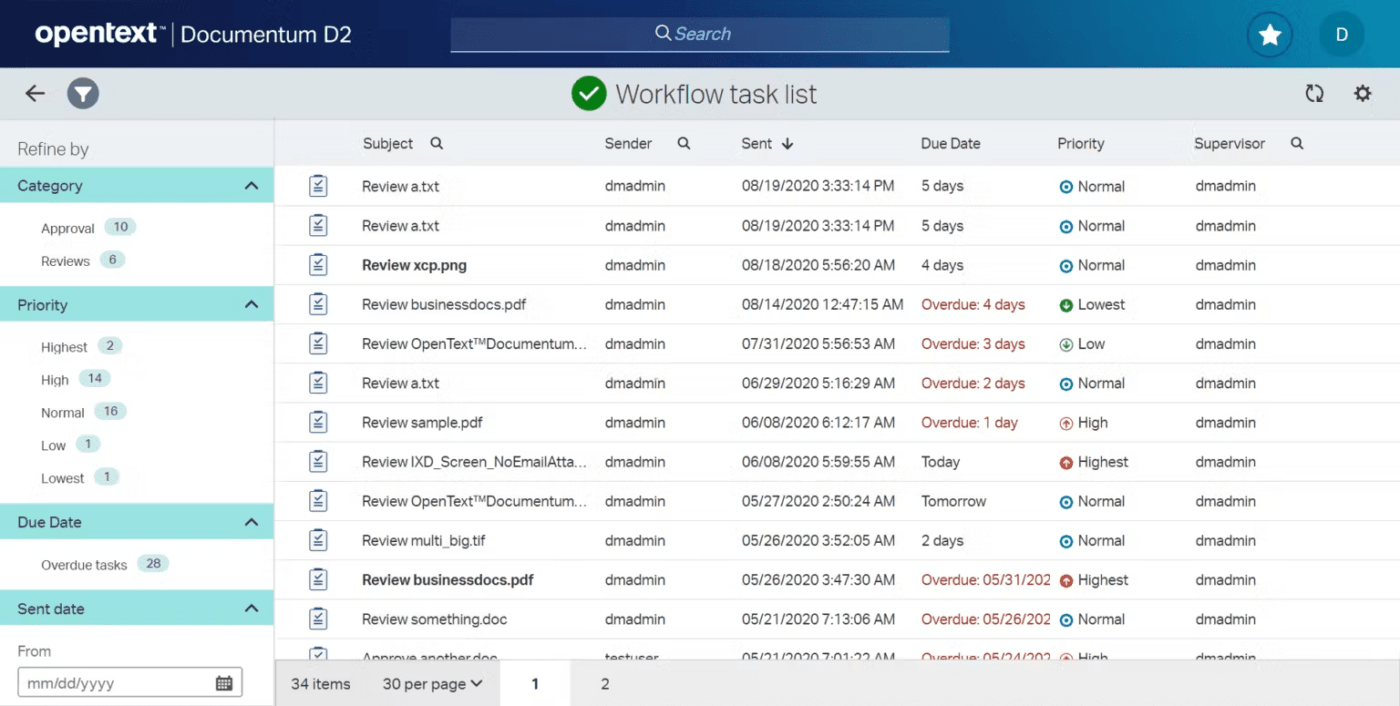For many midsize and enterprise businesses, managing documents can feel like an endless uphill battle. The frustrations are all too real—tedious data entry, version control issues, and mountains of data piling up.
I’ve seen firsthand how these challenges lead to costly errors, delays, and compliance risks. Determined to find a better way, I set out to explore the transformative potential of enterprise document management (EDM) software.
Document management solutions don’t just organize files—they optimize workflows, improve security, and make real-time collaboration easy.
After rigorous testing alongside the team at ClickUp, we’ve narrowed down the top 10 enterprise document management tools that can bring order and efficiency to document chaos. In this post, we’ll explore each one in detail.
- What Should You Look for in Enterprise Document Management Software?
- The 10 Best Enterprise Document Management Software
- 1. ClickUp (Best for seamless project management and document collaboration)
- 2. M-Files (Best for intelligent information management)
- 3. DocuWare (Best for digitizing paper documents and physical files)
- 4. PandaDoc (Best for managing sales contracts and eSignatures)
- 5. Microsoft SharePoint (Best for enterprise-wide collaboration and document control)
- 6. OpenText Content Suite (Best for comprehensive enterprise content management)
- 7. DocuSign (Best for secure digital transactions and eSignatures)
- 8. Jotform Enterprise (Best for custom form creation and data collection)
- 9. Notion (Best for flexible, wiki-style enterprise document management)
- 10. Pneumatic (Best for workflow management and process optimization)
- Optimize Your Enterprise Document Management Systems With ClickUp
What Should You Look for in Enterprise Document Management Software?
From my experience, seven key features can make a real difference to your document management process.
Here’s what to focus on:
- Robust security measures: Protect sensitive documents with advanced encryption, multi-factor authentication, and role-based access control. Look for workflow tools that comply with relevant regulations like GDPR or HIPAA
- Seamless collaboration: Ensure real-time document editing, commenting, and file sharing, whether your team is onsite or remote. Opt for software that integrates with tools like Slack or Microsoft Teams to enable effortless team collaboration
- Automated workflows: Save time by automating tasks like document retrieval, approval, routing, and archiving. Effective workflow automation reduces manual workloads and streamlines business process management
- Intuitive interface: Choose software that’s easy to navigate. Look for drag-and-drop features, customizable dashboards, and simple layouts to simplify project documentation and speed up team adoption
- Version control: Opt for enterprise document management software that lets you access documents, restore their previous versions, and track changes with a click. It’s essential for document security, audit trails, and accurate records management
- Advanced search: Locate digital documents with features like filters, metadata tagging, and full-text search. It ensures fast document retrieval—whether you need legal documents or specific files using keywords, tags, or custom fields
- Scalability: Ensure the enterprise document management software can grow with your business. It should support more users, increased document storage, and additional integrations without a hitch
💡 Pro Tip: Looking to boost team collaboration with enterprise document management software?
Here’s how to make it happen:
- Centralize data storage to reduce file duplication and confusion 🗂️
- Automate version control to keep everyone on the same page 🕒
- Set user permissions to ensure security and proper access 🔒
- Integrate with team tools to create a seamless workflow 🚀
The 10 Best Enterprise Document Management Software
The growth of midsize and enterprise businesses has led to an increasing demand for efficient document management solutions.
🚀 Fact Check: The global document management system market is set to skyrocket from $7.16 billion in 2024 to $24.91 billion by 2032, reflecting a robust 16.9% growth rate.
But what’s fueling this rapid expansion?
Enterprise document management systems have evolved from a basic electronic file cabinet. Today, they’re dynamic platforms offering seamless document access, robust data security, and specialized features to meet modern business needs.
That’s why, after testing countless solutions, I’ve handpicked the 10 best document management software options that truly deliver exceptional value for enterprise businesses.
Let’s explore them one by one:
1. ClickUp (Best for seamless project management and document collaboration)
After exploring multiple enterprise document management systems, I can confidently say ClickUp is in a league of its own.
Before my team switched to ClickUp, we struggled with paper-based documents and chaotic workflows. But ClickUp refined our processes and eliminated digital chaos across various tools.
It is one of the best document collaboration software I’ve used.
ClickUp Docs is at the core of ClickUp’s document prowess. I love its ability to create living documents that my team can access, edit, and enrich in real time.
The seamless interlinking of tasks and documents is a game-changer. It keeps related files and actions connected, so we don’t constantly jump between tools to find what we need—it’s all in one place.
And the version history feature? A lifesaver. If crucial edits are lost during a document review, it lets you restore the original content with one click.
But that’s just the beginning; ClickUp goes above and beyond. It’s a platform that adapts and scales with your business, bringing clarity to chaos. Here’s what this tool brings to the table:
Say yes to AI-powered document intelligence

ClickUp shines when you combine Docs with ClickUp Brain—injecting AI-driven intelligence into document management. Natural language processing converts long documents into sharp, actionable insights—keeping teams organized and ready to act.
The best part? With ClickUp Brain, my team no longer has to dig through piles of information. It’s a powerhouse that generates content and offers smart task suggestions to turn static documents into a dynamic part of your system.
Optimize workflows with powerful automation

Earlier, managing multiple projects used to mean endless tab-switching and context-juggling. Now, I use ClickUp Automations to automate repetitive tasks, set up triggers, and customize workflows.
With a single click, my team gets a bird’s-eye view of all our documents, complete with progress updates and potential roadblocks flagged by the AI. I also use it to assign tasks and set due dates, ensuring routine processes run without manual intervention.
ClickUp best features
- Keep communication flowing—use ClickUp Assign Comments to delegate tasks or ClickUp Chat for quick team discussions
- Organize documents with nesting and link-related tasks for comprehensive visibility
- Locate any document quickly with Connected Search
- Bring consistency to workflows with pre-built process documentation templates
- Provide precise feedback directly on documents, making reviews more efficient and actionable
- Ensure regulatory compliance and security with robust document access controls
- Boost productivity by integrating ClickUp with tools like Google Drive, Dropbox, Zoom, etc., keeping everything centralized
ClickUp limitations
- The mobile app lacks some functionalities available on the desktop version, limiting its usability on the go
- Due to its extensive features, users may initially find ClickUp challenging to navigate
ClickUp pricing
ClickUp ratings and reviews
- G2: 4.7/5 (9,000+ reviews)
- Capterra: 4.6/5 (4000+ reviews)
2. M-Files (Best for intelligent information management)
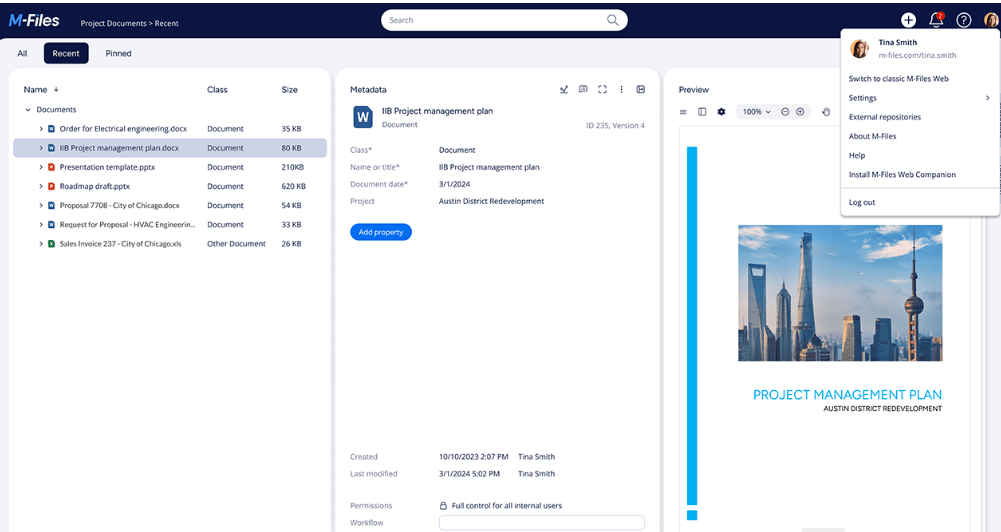
Next on my list of top enterprise document management systems is M-Files. It’s a unique AI-powered solution that reimagines how documents are organized and accessed.
Instead of traditional folder structures, it uses a metadata-driven approach, allowing you to find documents stored based on “what” rather than “where” they are. This intuitive setup speeds up document search times and enhances information management.
I also appreciate its automated workflows that streamline approvals, compliance, and document lifecycles while keeping everyone updated with the latest versions.
M-Files best features
- Reduce errors and rework by providing easy access control to the relevant documents
- Enhance user experience by streamlining document retrieval and reducing frustration
- Enable remote work by allowing access to electronic documents from any device, anywhere
- Enhance CRM and ERP systems with accurate, metadata-driven document integration
M-Files limitations
- Initial setup and customization may require considerable time and expertise
- Metadata tagging needs consistent updates to maintain accuracy
M-Files pricing
- Custom pricing
M-Files ratings and reviews
- G2: 4.3/5 (140+ reviews)
- Capterra: 4.3/5 (180+ reviews)
3. DocuWare (Best for digitizing paper documents and physical files)
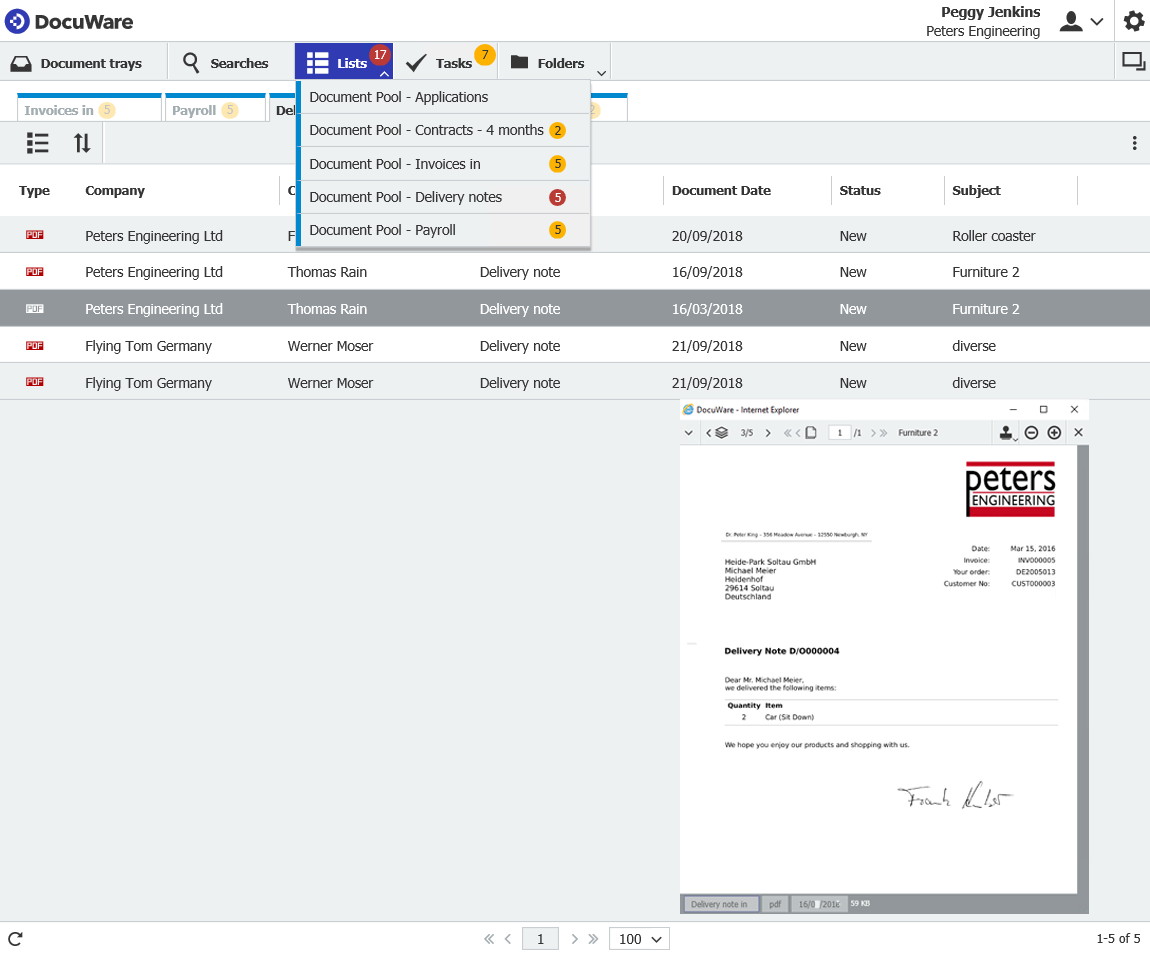
DocuWare helps you seamlessly transition from paper-based processes to a cloud-based electronic document management system. What’s unique? Intelligent document indexing that makes information easily searchable and accessible in seconds—ideal for hybrid or remote teams.
What impresses me most is the powerful workflow automation, handling everything from approvals to notifications and archiving to keep operations error-free. Plus, the advanced compliance features protect sensitive data and meet regulatory requirements.
DocuWare best features
- Streamline repetitive processes like data entry, version control, approvals, and reminders
- Organize digital documents from any source and extract critical data
- Use customizable workflows to ensure smooth document approvals and archiving
DocuWare limitations
- The steep learning curve can feel overwhelming for non-technical teams
- Limited customization options for personalizing the user experience
DocuWare pricing
- Custom pricing
DocuWare ratings and reviews
- G2: 4.4/5 (230+reviews)
- Capterra: 4.6/5 (90+reviews)
📮 ClickUp Insight: 74% of employees use two or more tools just to find the information they need—while jumping between emails, chat, notes, project management tools, and documentation. This constant context-switching wastes time and slows down productivity. As the everything app for work, ClickUp unifies all your work—email, chat, docs, tasks, and notes—into a single, searchable workspace, so everything is exactly where you need it.
4. PandaDoc (Best for managing sales contracts and eSignatures)
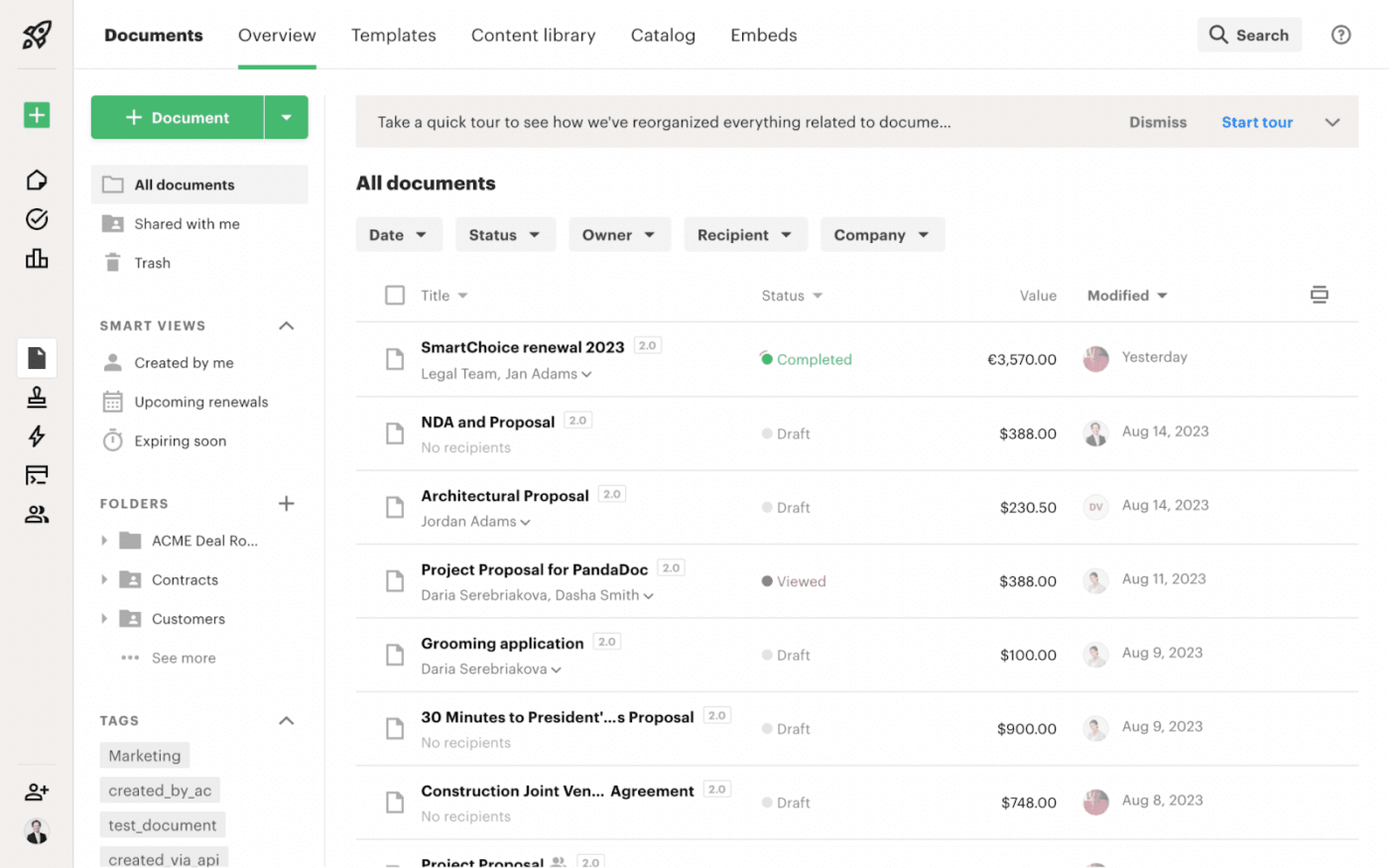
While PandaDoc isn’t a traditional enterprise document management system, it’s earned its place on this list for its efficiency. If your focus is creating, signing, sending, and tracking proposals, quotes, or contracts, PandaDoc is an impressive file-sharing software.
I particularly like the extensive library of document templates, which speeds up the drafting process. Plus, the built-in analytics feature lets you see when clients open a document and track how they interact with it—crucial in negotiations.
The standout feature? Its secure eSignature functionality eliminates the need for third-party tools, keeping everything streamlined.
PandaDoc best features
- Collaborate efficiently with in-document commenting and real-time editing
- Customize branding for consistent and professional client-facing materials
- Embed trusted payment gateways for quick, secure customer payments
PandaDoc limitations
- Primarily caters to sales teams, with a niche focus on contracts and related documents
- Access to some advanced features is limited to higher-tier pricing plans
PandaDoc pricing
- Starter: $35/month per user
- Business: $65/month per user
- Enterprise: Custom pricing
PandaDoc ratings and reviews
- G2: 4.7/5 (2,000+ reviews)
- Capterra: 4.5/5 (1,000+ reviews)
5. Microsoft SharePoint (Best for enterprise-wide collaboration and document control)
If your organization is invested in the Microsoft ecosystem, SharePoint offers a robust enterprise document management system. It shines in document access, version control, and real-time co-authoring through Microsoft 365.
What made it stand out for me is its organized document libraries with metadata management and the ability to create dynamic team sites. Its customizable intranet features enable secure and efficient collaboration, making it much more than a storage solution.
Microsoft SharePoint best features
- Centralize document storage with automatic syncing across Microsoft 365 apps
- Enhance document classification and searchability with metadata tags and custom properties
- Streamline approval processes and content management by setting up automated workflows
Microsoft SharePoint limitations
- The platform’s extensive features can be complex for new users, requiring dedicated IT support for setup and maintenance
- Licensing fees are higher, especially when scaling up with multiple users
Microsoft SharePoint pricing
- SharePoint Plan 1: $5/user per month
- Microsoft 365 Business Standard: $12.50 user/month
Microsoft SharePoint ratings and reviews
- G2: 4.0/5 (8,000+ reviews)
- Capterra: 4.3/5 (5,000+ reviews)
➡️ Read More: Best Knowledge Management Software Tools
6. OpenText Content Suite (Best for comprehensive enterprise content management)
OpenText Content Suite is a great solution if your organization handles massive content volumes and faces strict regulatory requirements.
Built for the end-to-end content lifecycle, it provides a unified platform for managing diverse electronic documents, from emails to social media and web content. What I appreciate most is how it integrates seamlessly with enterprise systems like SAP and Microsoft.
Its robust task automation enables organizations to map out and optimize processes. The advanced tools make it easy to stay industry-compliant, supporting everything from data retention policies to audit trails.
OpenText Content Suite best features
- Consolidate content sources into a single system, managing both structured and unstructured data
- Automate compliance and data security for robust governance
- Use AI analytics to gain insights and enhance decision-making
OpenText Content Suite limitations
- The setup process demands substantial IT resources and customization, which can be time-consuming and complex
- Some users report that the interface lacks the modern appeal of newer solutions
OpenText Content Suite pricing
- Custom pricing
OpenText Content Suite reviews and ratings
- G2: Not enough reviews
- Capterra: N/A
7. DocuSign (Best for secure digital transactions and eSignatures)
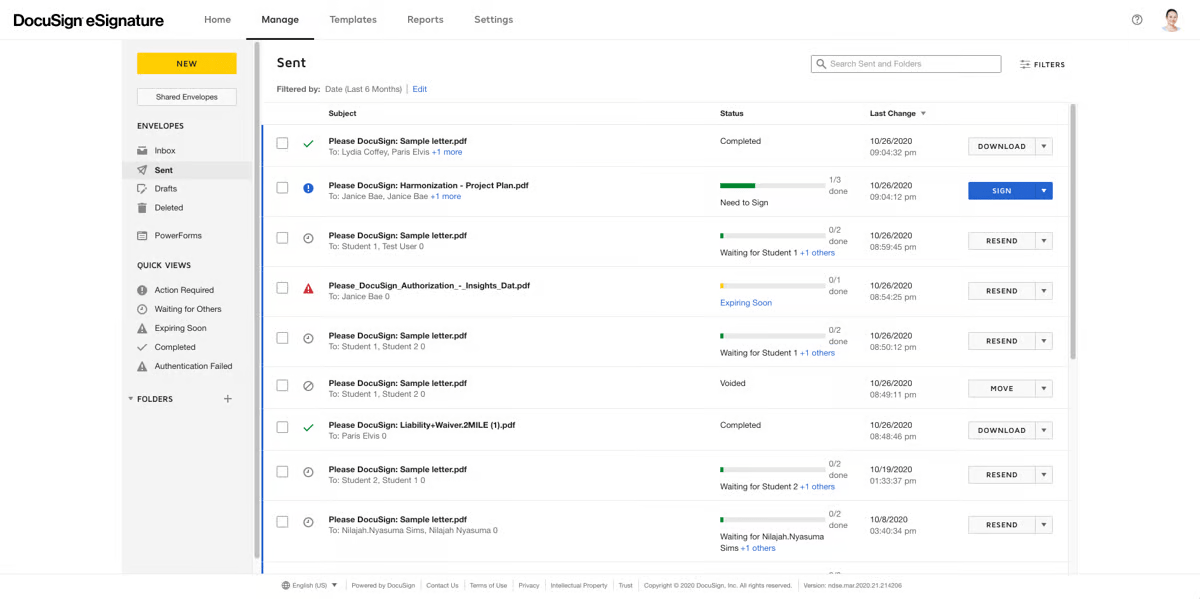
DocuSign’s CLM (Contract Lifecycle Management) offering has evolved into a robust enterprise document management system, especially for contract-heavy industries.
It manages the entire agreement lifecycle—from drafting to securely sending and signing electronic documents. The template management and clause library features streamline legal workflows and maintain consistency.
I particularly appreciate how it supports mobile signing for on-the-go deal closures, speeds contract approvals, and ensures global regulatory compliance. It significantly reduces turnaround times and eliminates the need for physical storage or paper-based documents.
DocuSign best features
- Send and sign agreements securely with legally binding eSignatures
- Maintain compliance with global security standards like eIDAS and ESIGN
- Improve document accuracy using templates and real-time collaboration tools
- Enjoy custom branding and responsive signing for a better user experience
DocuSign limitations
- It is best suited for signing rather than full electronic document management, which may limit users seeking comprehensive solutions
- Advanced features are only accessible with higher pricing tiers, restricting functionality for users on lower plans
DocuSign pricing
- Personal: $15/month
- Standard: $45/month per user
- Business Pro: $65/month per user
- Advanced solutions: Custom pricing
DocuSign ratings and reviews
- G2: 4.5/5 (2,000+ reviews)
- Capterra: 4.8/5 (8,000+ reviews)
8. Jotform Enterprise (Best for custom form creation and data collection)
In my experience, Jotform Enterprise works well for businesses that rely on data collection to generate legal documents, contracts, and financial reports. Its no-code automation makes it easy to build workflows and automate document approvals without technical expertise.
The platform’s stringent security protocols, including HIPAA and SOC 2 regulations, provide peace of mind when handling sensitive data. However, its form-centric approach may not support document storage or metadata management needs without third-party integrations
Jotform Enterprise best features
- Automate complex workflows with customized forms and conditional logic
- Generate documents directly from form submissions to reduce manual data entry
- Ensure compliance with stringent security policies
Jotform Enterprise limitations
- The mobile interface can be challenging to use for detailed tasks
- Collaboration features are limited compared to traditional enterprise document management systems
Jotform Enterprise pricing
- Custom pricing
Jotform Enterprise ratings and reviews
- G2: 4.7/5 (3,300+reviews)
- Capterra: 4.7/5 (2000+reviews)
➡️ Read More: The Best CRM Marketing Software Tools
9. Notion (Best for flexible, wiki-style enterprise document management)
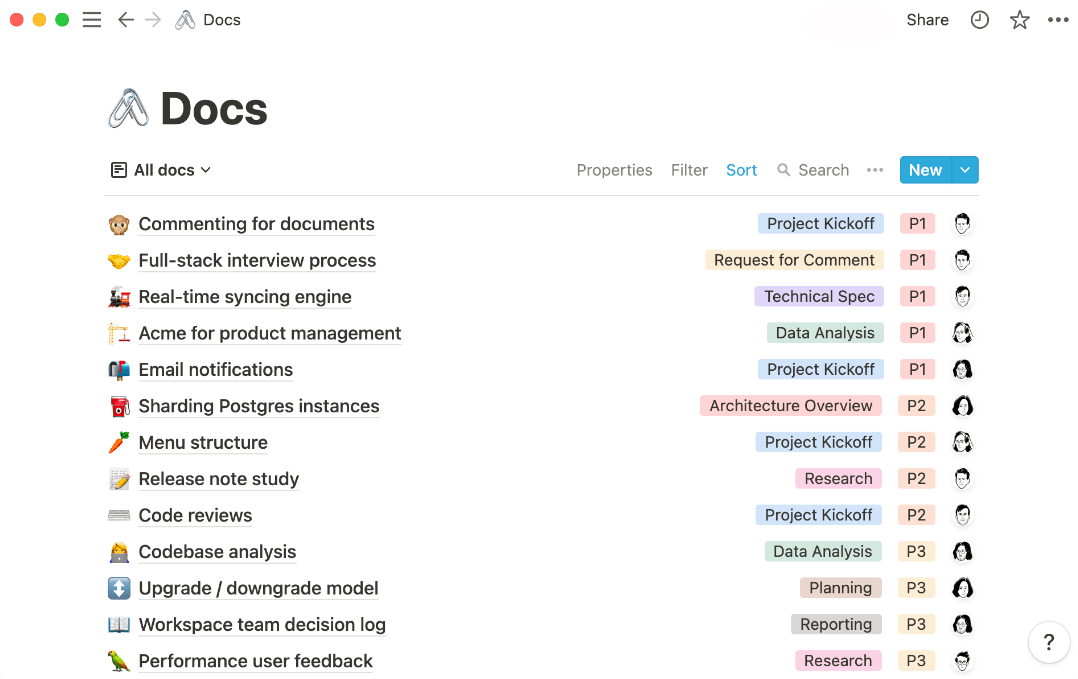
If you’re looking for flexibility, Notion offers an all-in-one enterprise content management workspace that integrates notes, tasks, databases, and wikis. I’ve found it invaluable for organizing team knowledge and streamlining collaboration.
Its drag-and-drop interface allows for intuitive customization, whether you’re handling business documents or personal projects. Plus, with robust search and integration capabilities, this tool ensures your team always has the correct information at their fingertips.
Notion best features
- Create, store, and manage documents in a single, unified workspace
- Collaborate in real-time with your team on shared documents
- Connect documents seamlessly, linking project plans and roadmaps for better context
- Enhance document security with granular permissions and access controls
Notion limitations
- It can be overwhelming for new users, as the multitude of features and customization options may lead to a steep learning curve
- Some users may find it lacks advanced document management features compared to dedicated platforms
Notion pricing
- Free
- Plus: $12/month per user
- Business: $18/month per user
- Enterprise: Custom pricing
- Add Notion AI to any plan for $10 per member/month
Notion ratings and reviews
- G2: 4.7/5 (5,500+ reviews)
- Capterra: 4.7/5 (2,000+ reviews)
10. Pneumatic (Best for workflow management and process optimization)
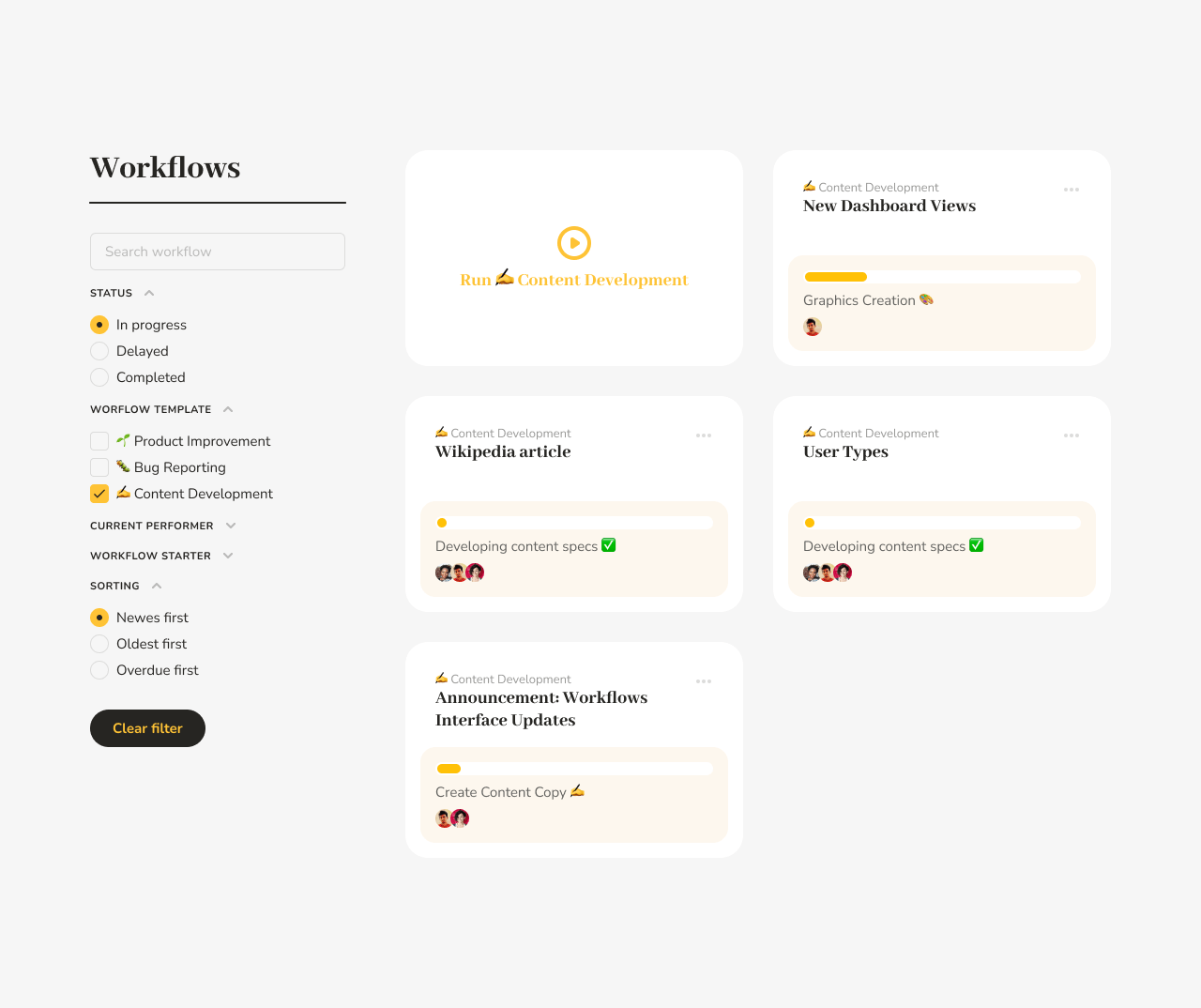
Last on my list is Pneumatic, a tool focused on automating business processes and managing workflows. It helps improve operations by allowing you to create customizable workflow templates, track progress, and make data-driven adjustments.
While it may not be a comprehensive document management system, Pneumatic complements one by ensuring tasks run smoothly across your organization.
Pneumatic best features
- Create and refine workflow templates using the Template Builder to keep processes up-to-date
- Run multiple workflows from a single template and clone existing ones to streamline setup
- Monitor progress through the dashboard to identify bottlenecks, assign tasks, and set priorities
Pneumatic limitations
- The tool mainly focuses on workflow management, which may limit its effectiveness for comprehensive document storage needs
- Users might face integration issues with existing document management systems, leading to inefficiencies
Pneumatic pricing
- Self-serve: $99/month
- Turnkey: $5,900/year
- Enterprise: Custom pricing
Pneumatic ratings and reviews
- G2: Not enough reviews
- Capterra: 4.5/5 (30+reviews)
💡 Pro Tip: Handling ever-changing content, sensitive documents, or files requiring detailed review? Document comparison software delivers the precision you need, catching even the smallest edits and ensuring no critical update goes unnoticed.
With it, you can:
- Identify discrepancies instantly to catch errors before they escalate 🔍
- Keep a clear audit trail and version control that tracks all changes for regulatory review 📜
- Protect sensitive data by verifying edits and flagging unauthorized modifications 🔒
- Speed up review processes with automated comparisons, reducing manual workloads ⚡
Optimize Your Enterprise Document Management Systems With ClickUp
There you have it—the top 10 enterprise document management systems to transform how you manage business documents. Whether you aim to enhance collaboration, ensure compliance, or eliminate the chaos of physical documents, you’ll find the right solution here.
If you’re looking for a powerful, all-in-one solution, look no further than ClickUp! Its seamless integration of project management features, centralized storage, workflow automation, and real-time document collaboration has transformed my work.
What makes it unique is its ability to connect your enterprise document management strategy to your broader work ecosystem. Link documents to tasks, projects, and goals, ensuring your team always has the context to work.
So why wait? Sign up on ClickUp to utilize your team’s full potential today!





